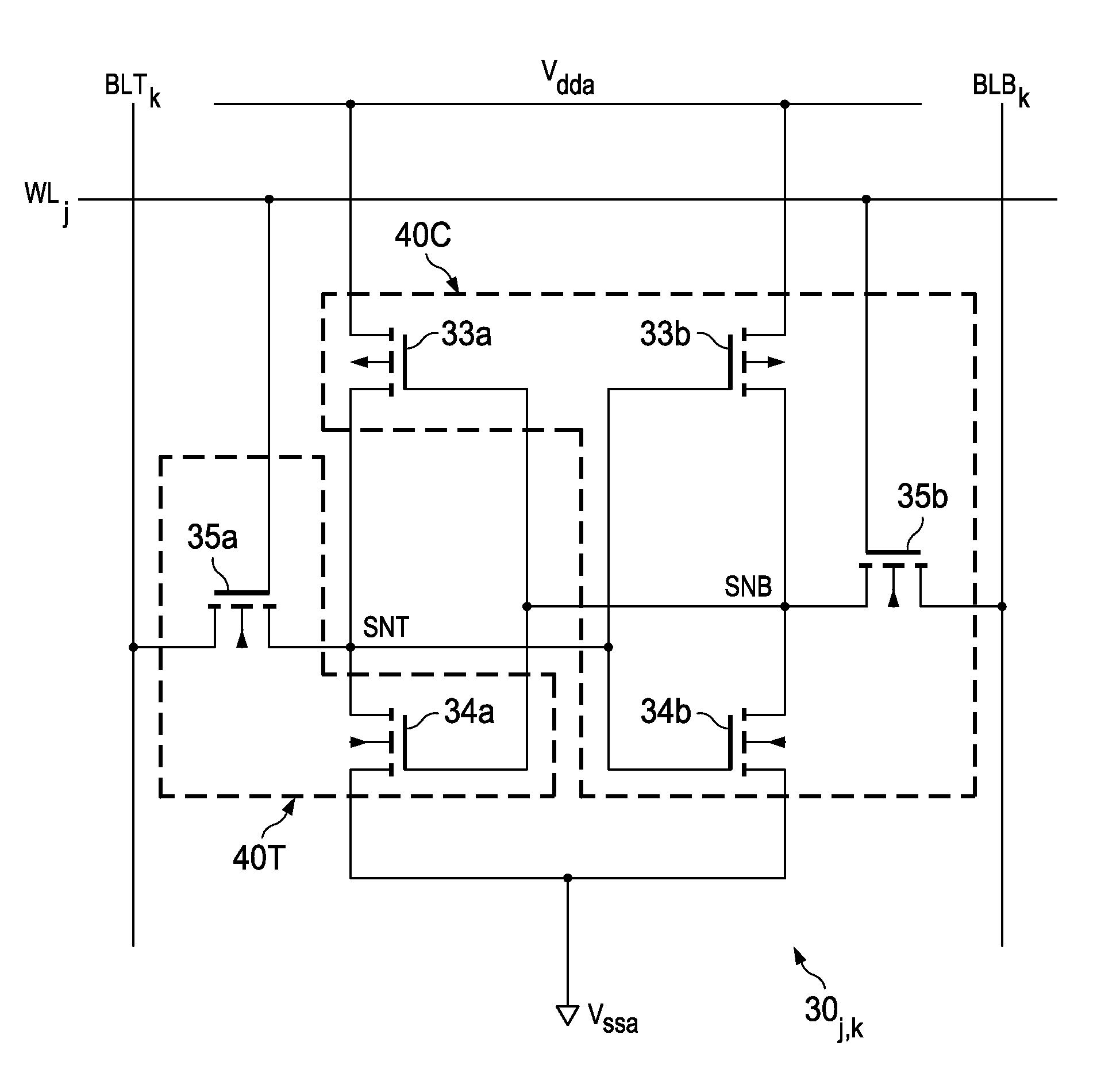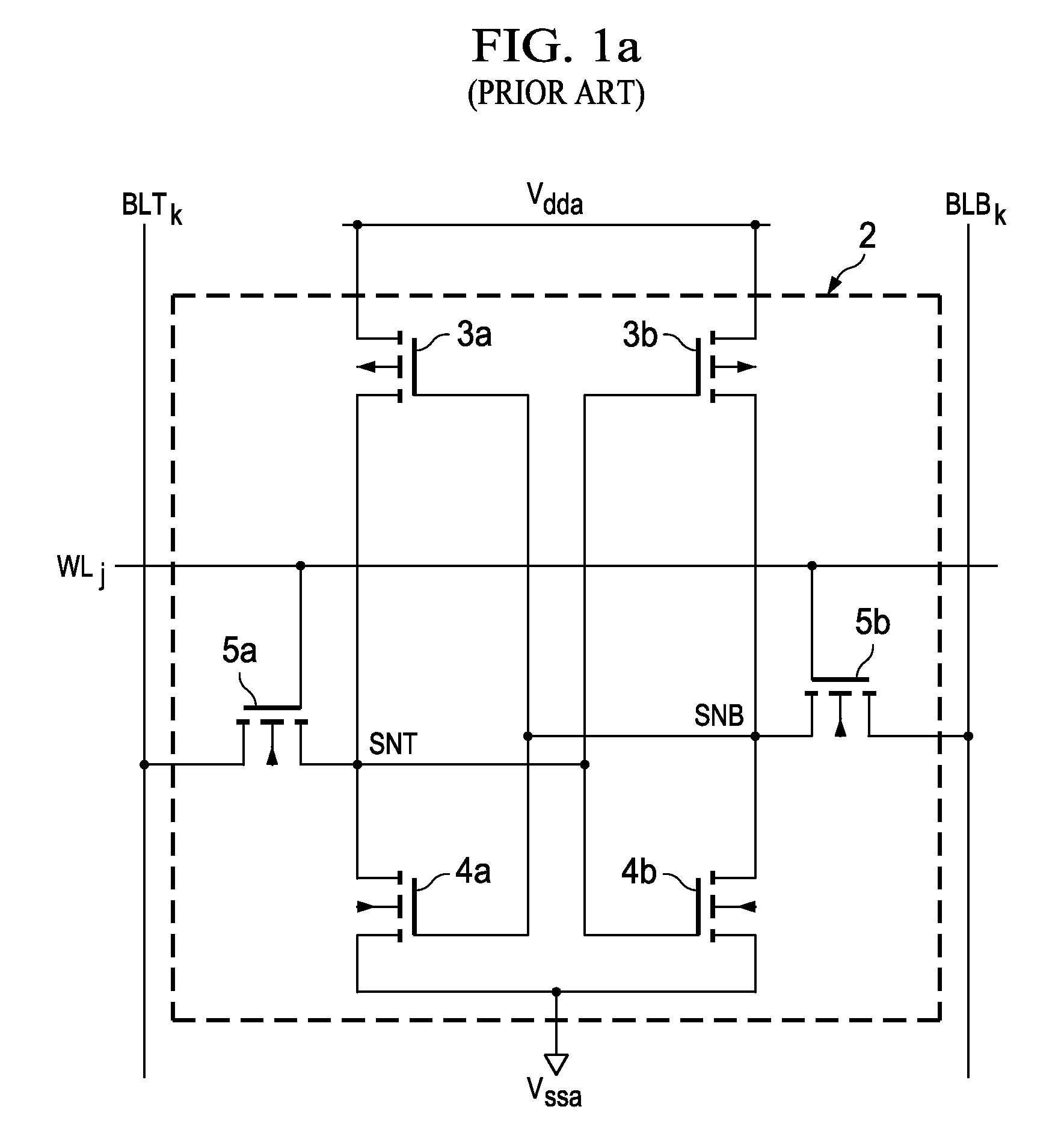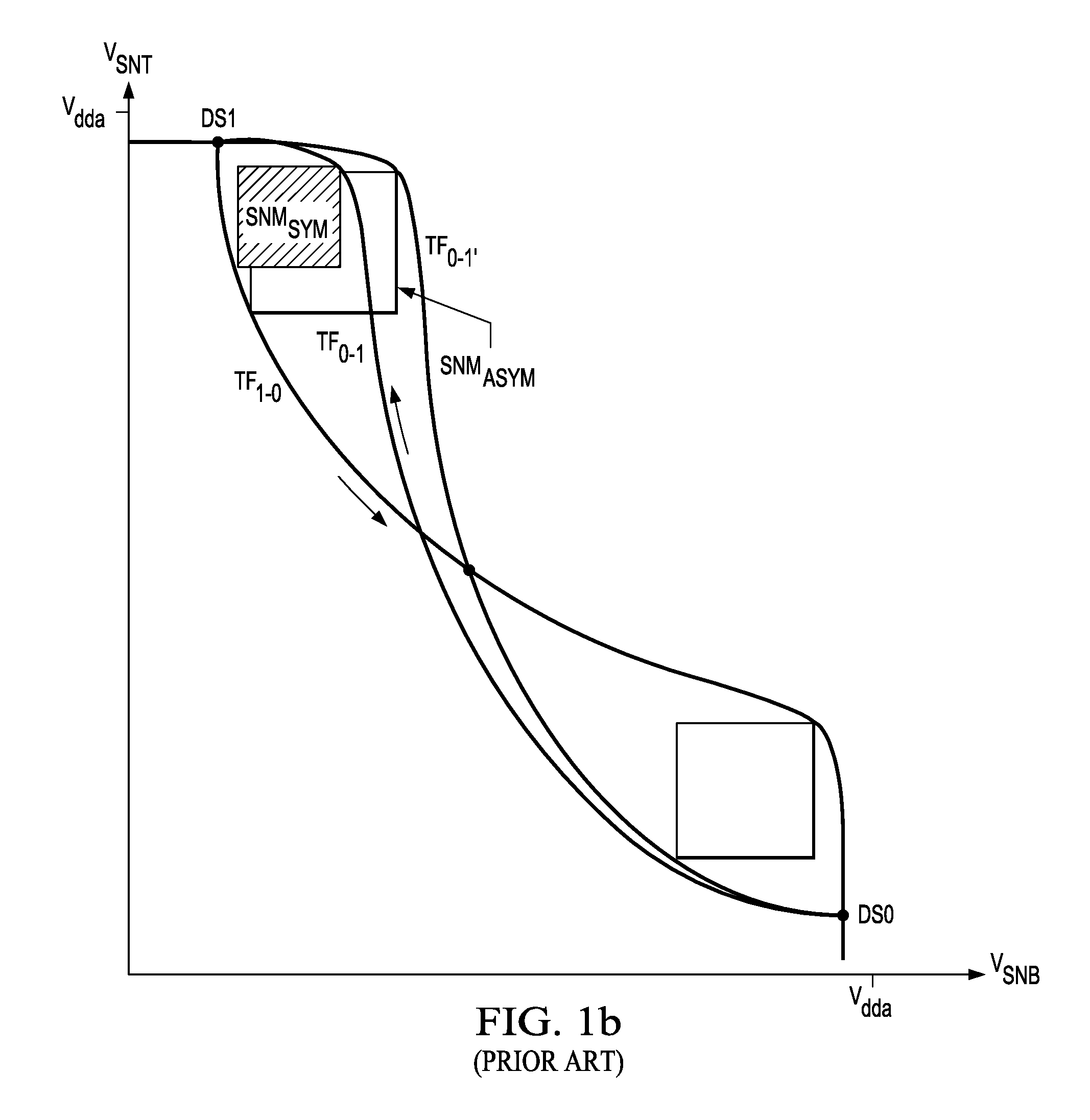Asymmetric static random access memory cell with dual stress liner
a random access memory and stress liner technology, applied in the field of solid-state memory, can solve the problems of increasing the probability of read and write functional failures, physical scaling of device sizes, and increasing the variability of electrical characteristics, so as to improve the static noise margin
- Summary
- Abstract
- Description
- Claims
- Application Information
AI Technical Summary
Benefits of technology
Problems solved by technology
Method used
Image
Examples
Embodiment Construction
[0040]The present invention will be described in connection with its embodiments, namely as implemented into a static random access memory (SRAM) embedded within a larger scale integrated circuit, and constructed according to complementary metal-oxide-semiconductor (CMOS) technology, because it is contemplated that this invention is especially beneficial in such an application. However, it is contemplated that those skilled in the art having reference to this specification will readily recognize that this invention may be applied to a wide range of memory devices. Accordingly, it is to be understood that the following description is provided by way of example only, and is not intended to limit the true scope of this invention as claimed.
[0041]FIG. 2 illustrates an example of large-scale integrated circuit 10, in the form of a so-called “system-on-a-chip” (“SoC”), as now popular in many electronic systems. Integrated circuit 10 is a single-chip integrated circuit into which an entire...
PUM
 Login to View More
Login to View More Abstract
Description
Claims
Application Information
 Login to View More
Login to View More - R&D
- Intellectual Property
- Life Sciences
- Materials
- Tech Scout
- Unparalleled Data Quality
- Higher Quality Content
- 60% Fewer Hallucinations
Browse by: Latest US Patents, China's latest patents, Technical Efficacy Thesaurus, Application Domain, Technology Topic, Popular Technical Reports.
© 2025 PatSnap. All rights reserved.Legal|Privacy policy|Modern Slavery Act Transparency Statement|Sitemap|About US| Contact US: help@patsnap.com



